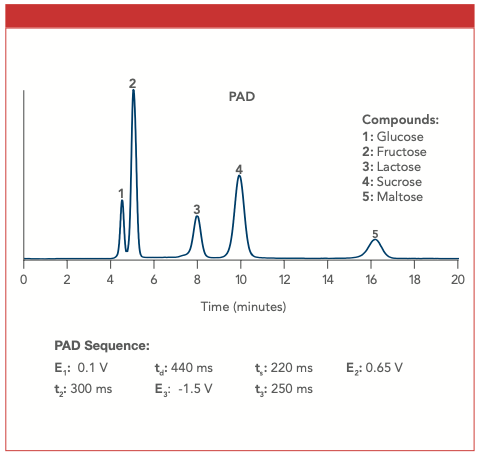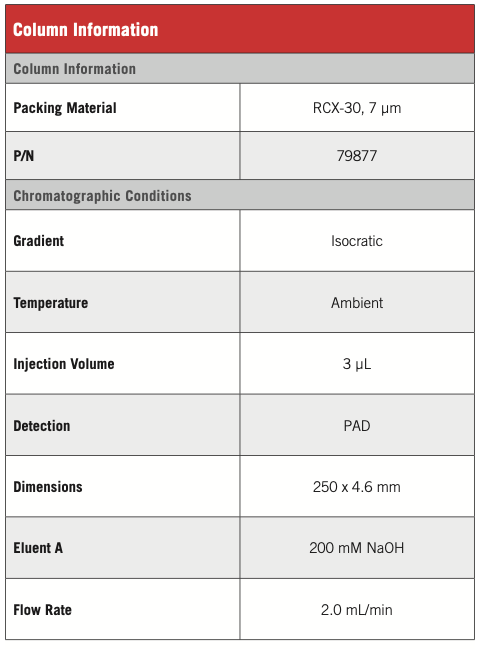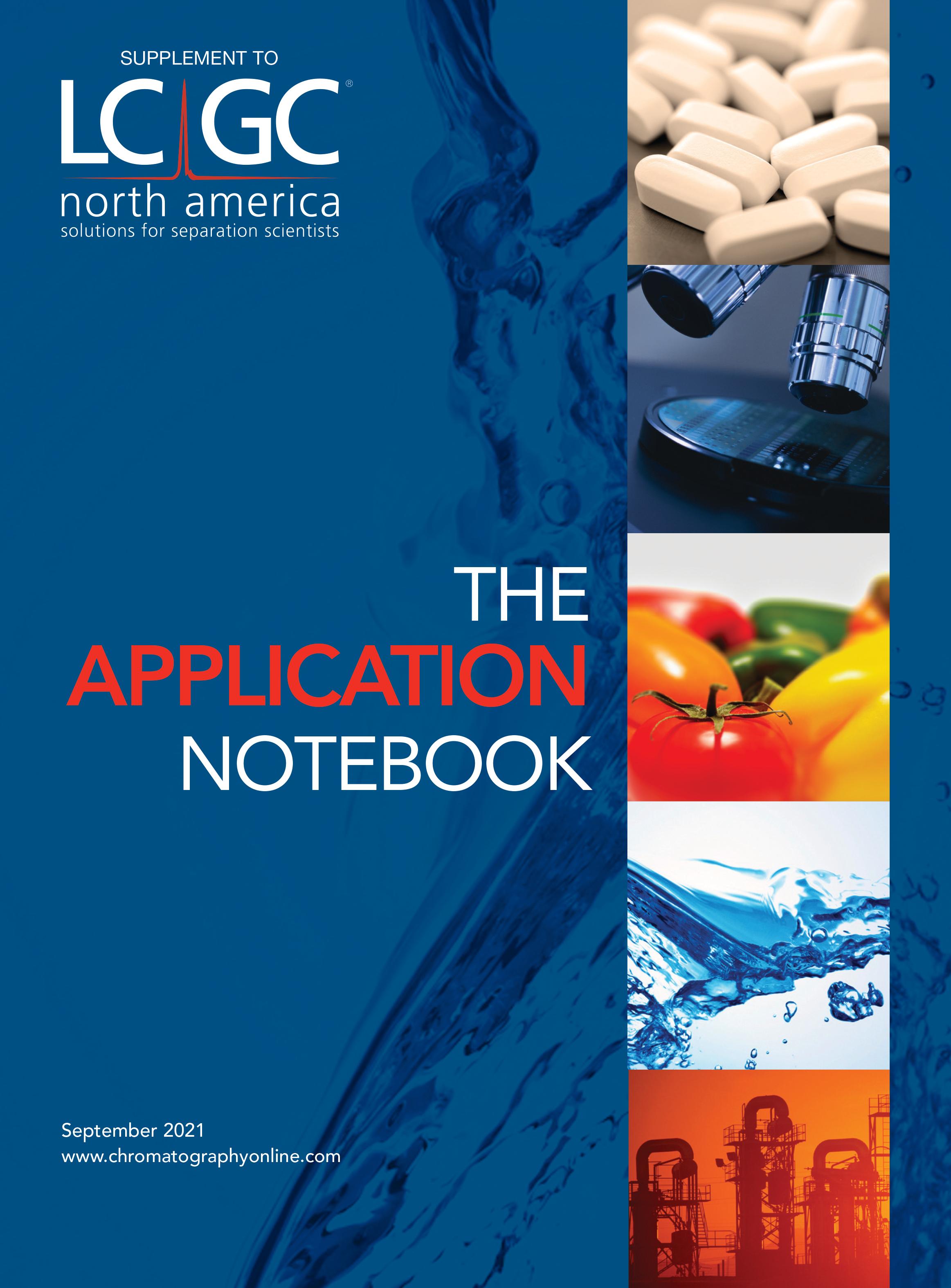Application Note: Sugar, Sugar, Everywhere
Mono and disaccharides are of increasing importance in the growing industrialized food industry. With the rise of diabetes and other metabolic diseases, nutritional content has found itself at the forefront of consumer concern. Investigation of the constituents found on the packaging is now commonplace. Consumer concern, coupled with the increase in FDA regulation on consumer products, has brought about a change in individual ingredients reported on labels. Identification of the five most common mono and disaccharides found in packaged foods, lactose, maltose, sucrose, fructose, and glucose, is easily resolved on any of the RCX-30 family of columns offered by Hamilton Company.
Ultraviolet absorption, normally the detection method of choice for most chromatography separations, is unsuitable for carbohydrates. This means other analyte detection methods must be used, such as refractive index (RI), conductivity, and pulsed amperometric detection (PAD). Both RI and conductivity are excellent choices for detection if only isocratic methods are needed. PAD, however, offers the advantage of detection from either gradient or isocratic elution. An additional consideration when choosing a detector is sensitivity. RI and conductivity provide nanomolar detection levels while the detection limit for PAD is an order of magnitude lower.
The RCX-30 columns, powered by a propyl trimethylamine functionality, use a strong anion exchange mechanism to aid carbohydrate separation. Increasing saccharide retention is easily achieved by increasing pH or decreasing hydroxide concentration.


Similarly, initiating the opposite operations facilitate a decrease in retention and allow a fine-tuning of the individual analytes. The PS-DVB particles featured in all Hamilton polymeric columns provide exceptional column lifetime and reduced backpressure. Polymeric columns always provide excellent pH stability in alkaline mobile-phase conditions because there are no silanols to degrade, offering consistent performance, injection after injection.

Hamilton Company
4970 Energy Way, Reno, NV 89502
Tel. (775) 858-3000, (800) 648-5950
Website: www.hamiltoncompany.com
